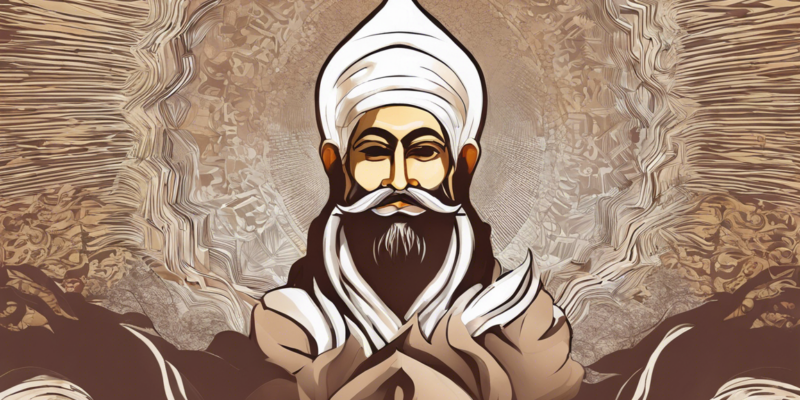Introduction
Kabir Das, a mystic poet and saint of India, left a remarkable legacy through his profound writings and teachings. One of the most popular forms of his literary work is the ‘Dohe,’ or couplets, which are simple yet deep in meaning. These couplets are known as ‘Kabir Das Ke Dohe’ and continue to resonate with people across generations due to their timeless wisdom and universal appeal. In this article, we will delve into the meaning of Kabir Das Ke Dohe, exploring the profound messages hidden within these verses that offer guidance on life, spirituality, morality, and the nature of existence.
Understanding Kabir Das Ke Dohe
Kabir Das Ke Dohe are written in a simple language that is easily understood by the masses. Despite their simplicity, they carry layers of meanings and insights that provoke deep contemplation. Let’s explore some of the essential themes and messages conveyed in Kabir Das Ke Dohe:
1. On Spirituality and Inner Journey
One of the central themes in Kabir Das Ke Dohe is the importance of spirituality and the inner journey. The poet emphasizes the significance of connecting with one’s inner self and realizing the true essence of life. For instance, in the doha, “Bura Jo Dekhan Main Chala, Bura Naa Milya Koye; Jo Munn Khoja Apnaa, To Mujhse Bura Naa Koye,” Kabir urges individuals to introspect and look within themselves to find the truth. This emphasizes the idea that true knowledge and wisdom come from self-realization and inner exploration.
2. On Equality and Unity
Kabir Das Ke Dohe also emphasize the principles of equality and unity. The poet advocates for a society where there are no distinctions based on caste, creed, or social status. In the couplet, “Dukh Mein Simran Sab Karen, Sukh Mein Kare Na Koye; Jo Sukh Mein Simran Kare, Tau Dukh Kahe Ko Hoye,” Kabir highlights the importance of remembering the Divine not only in times of sorrow but also in moments of joy. This reinforces the idea of treating both joy and sorrow with equanimity and embracing all experiences as part of the divine plan.
3. On Morality and Righteousness
Kabir’s dohas reflect a strong sense of morality and righteousness. He advocates for leading a simple, honest, and virtuous life. In the couplet, “Jaise Til Mein Tel Hai, Jyon Chakmak Mein Aag; Tera Saayin Tujh Mein Hai, Tu Jaag Sake To Jaag,” Kabir uses metaphors to convey the message that just as oil is present within a sesame seed and fire within a flint, the Divine is inherently present within each individual. This underscores the importance of recognizing one’s inner divinity and living a life guided by moral principles.
4. On Love and Devotion
Love and devotion are recurring themes in Kabir Das Ke Dohe. The poet emphasizes the power of love in bridging the gap between individuals and the divine. In the couplet, “Prem Gali Ati Sankri, Taahi Sankar Prem; Prem Hi Gali Aawat, Dohu Behuri Sam,” Kabir speaks of the transformative nature of love and how it can lead one to the path of spiritual awakening. Love, according to Kabir, is the ultimate force that connects all beings and leads them towards enlightenment.
5. On the Illusions of the World
Kabir often criticizes the materialistic pursuits and illusions of the world in his dohas. He warns against being entangled in the transient pleasures of the material world and advocates for seeking the eternal truth. In the couplet, “Maati Kahe Kumhar Se, Tu Kya Raundhe Mohe; Ek Din Aisa Aayega, Main Raundhunga Tohe,” Kabir uses the metaphor of a potter and clay to symbolize the impermanence of life. This serves as a reminder to focus on spiritual growth and liberation rather than getting lost in worldly attachments.
6. On the Path to Liberation
Central to Kabir’s teachings is the idea of liberation and freedom from the cycle of birth and death. He calls upon individuals to break free from the shackles of ignorance and realize their true nature. In the couplet, “Pothi Padh Padh Jag Mua, Pandit Bhayo Na Koye; Dhai Aakhar Prem Ke, Jo Padhe So Pandit Hoye,” Kabir emphasizes that true wisdom does not come from bookish knowledge alone but from experiencing the essence of love and devotion. This highlights the path to ultimate liberation through spiritual awakening and self-realization.
7. On the Guru-Disciple Relationship
Kabir also emphasizes the importance of the guru-disciple relationship in the spiritual journey. He stresses the role of a spiritual guide in leading the disciple towards enlightenment and inner transformation. In the couplet, “Guru Govind Dou Khade, Kake Laagu Paaye; Balihari Guru Aapno, Govind Diyo Milaye,” Kabir acknowledges the guru and the divine as equals, emphasizing the guru’s essential role in facilitating the disciple’s union with the divine. This underscores the significance of humility, devotion, and surrender in the spiritual path.
Conclusion
Kabir Das Ke Dohe encapsulate the essence of spirituality, morality, love, and liberation in simple yet profound verses. Through his timeless teachings, Kabir continues to inspire and guide seekers on the path of self-discovery and enlightenment. The themes and messages woven into his dohas are relevant even in contemporary times, offering valuable insights into the human experience and the nature of reality. By reflecting on the wisdom contained in Kabir Das Ke Dohe, individuals can gain a deeper understanding of life’s mysteries and embark on a transformative journey towards inner peace and spiritual fulfillment.
Frequently Asked Questions (FAQs)
1. Who was Kabir Das?
Kabir Das was a 15th-century Indian mystic poet and saint who transcended the barriers of religion and caste through his spiritual teachings and poetry. He is revered as a significant figure in the Bhakti movement and Sufi philosophy.
2. What are Dohe in Indian literature?
Dohe are couplets in Indian literature that convey profound messages in a simple and concise manner. They are often used to impart moral lessons, spiritual guidance, and philosophical insights.
3. How many Kabir Das Ke Dohe are there?
Kabir Das is believed to have composed over 3000 dohas, reflecting a wide range of themes such as spirituality, love, morality, and the nature of existence.
4. What language did Kabir Das write in?
Kabir Das wrote in a language that was a blend of various dialects such as Hindi, Braj, and Avadhi. His verses were accessible to the common people and conveyed deep spiritual truths in simple terms.
5. What is the significance of Kabir Das Ke Dohe in Indian culture?
Kabir Das Ke Dohe hold immense significance in Indian culture as they serve as a guiding light for spiritual seekers and moral aspirants. The timeless wisdom contained in these couplets continues to inspire people across generations to seek truth, love, and inner peace.



Comments